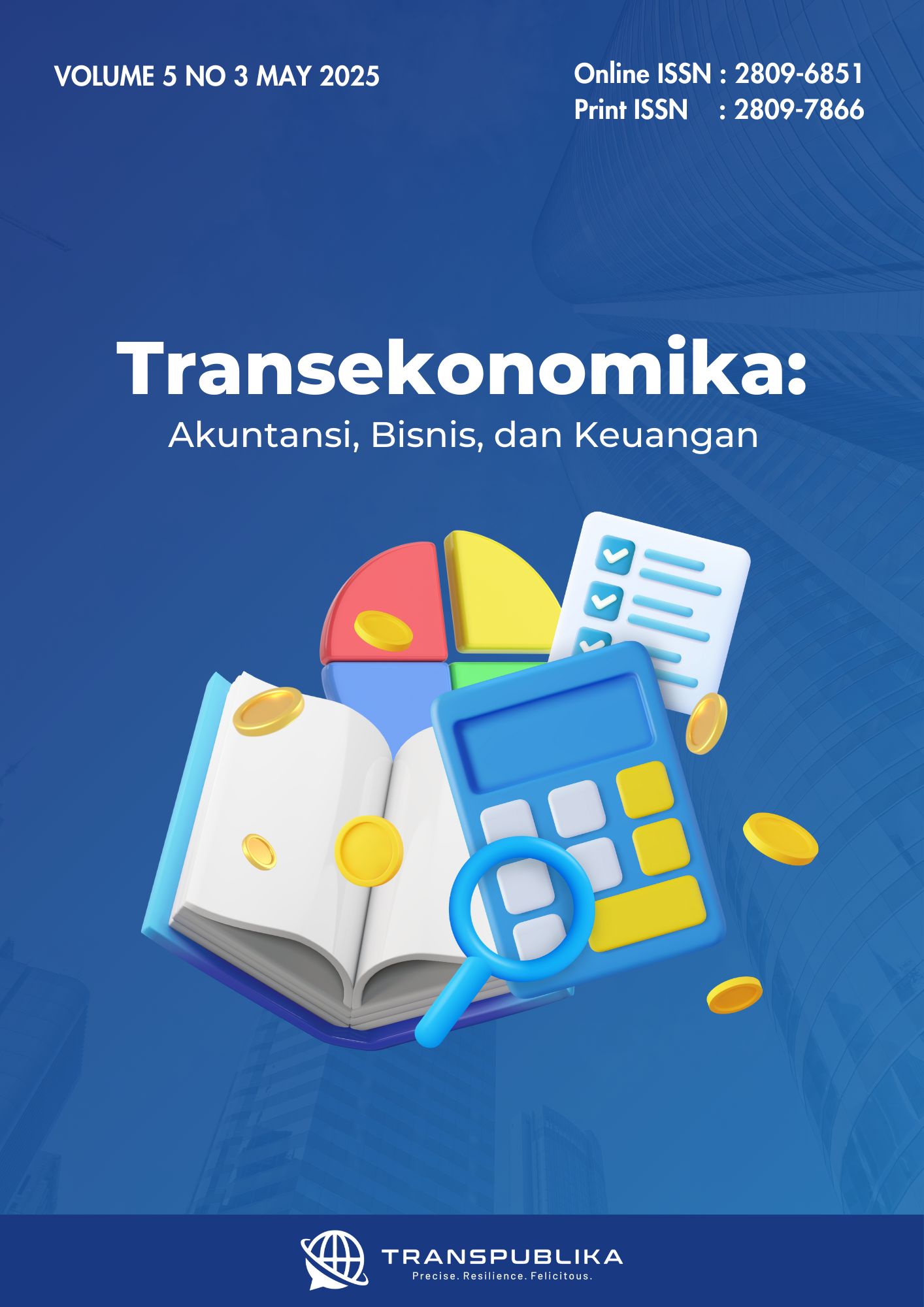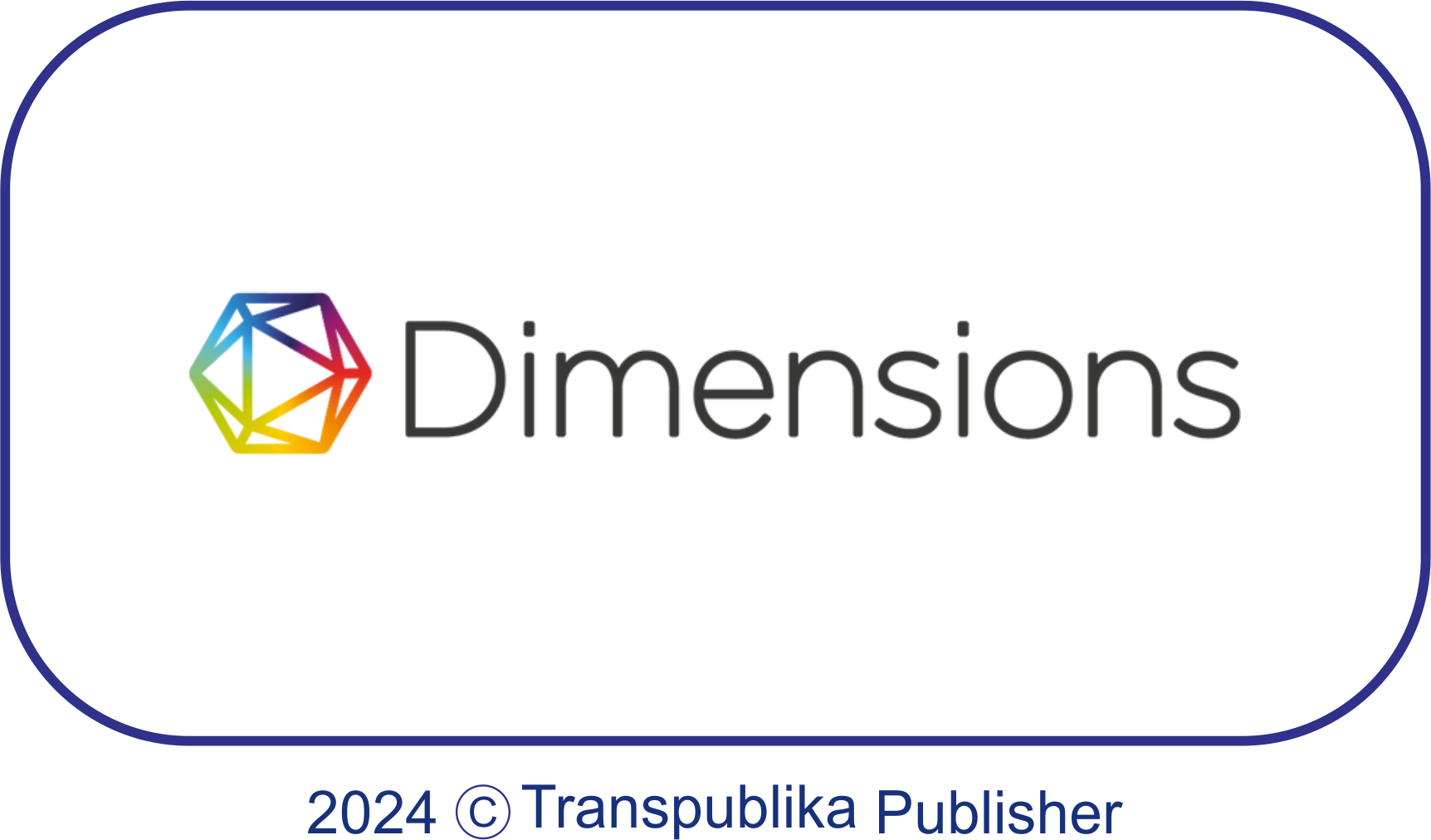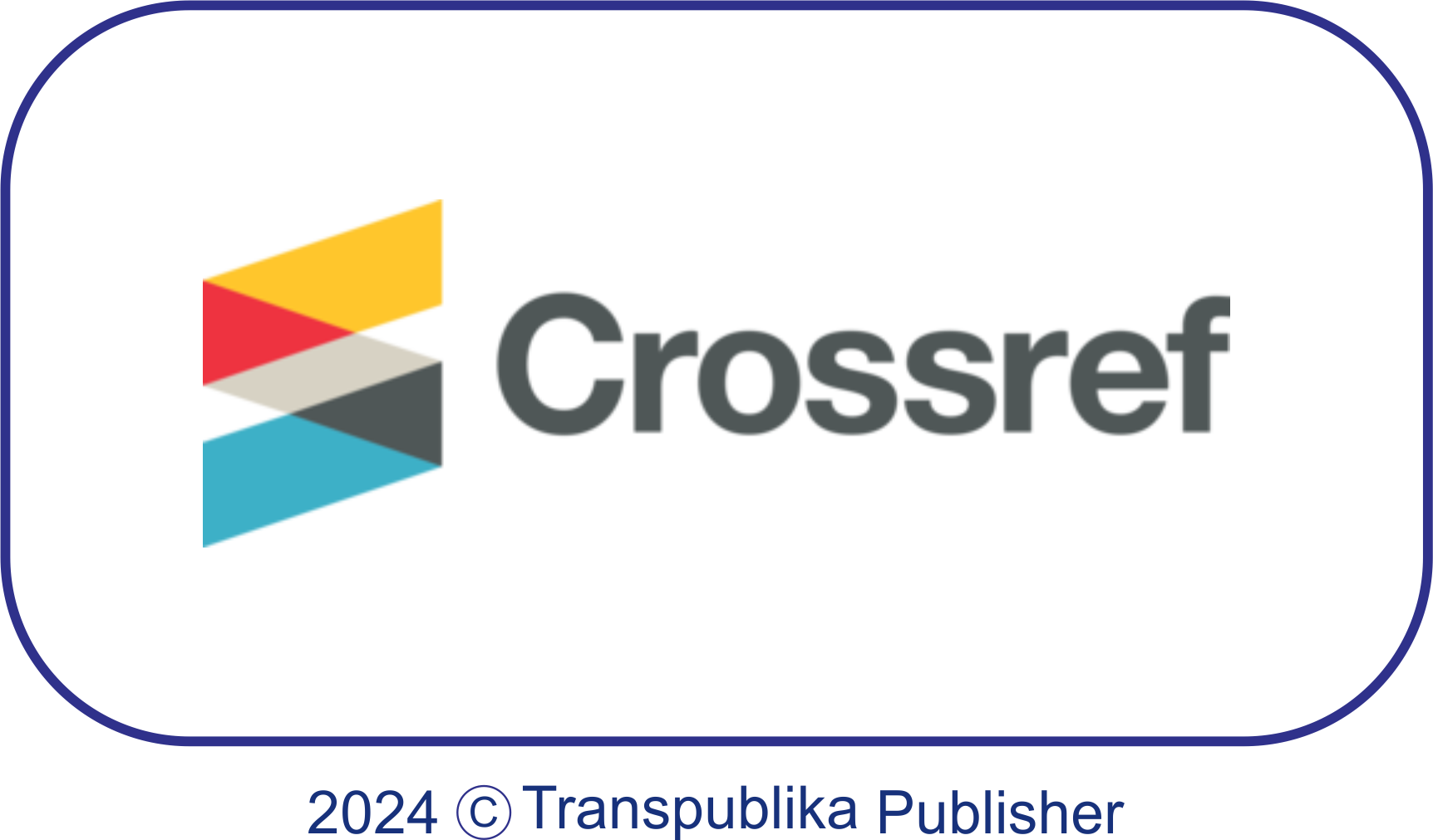Analysis of Regional Revenue of Palu City for the 2019-2023 Period
Abstract
Indonesia's regional autonomy policies aim to enhance local fiscal independence, yet most regions, including Palu City, remain heavily dependent on central government transfers. This study analyzes the Local Revenue (Pendapatan Asli Daerah/PAD) of Palu City from 2019 to 2023. The research aims to understand the growth dynamics, contribution, elasticity, and effectiveness of PAD, particularly in the aftermath of the 2018 natural disasters and the Covid-19 pandemic. A quantitative approach was employed using formulas for growth, contribution, elasticity, and effectiveness to analyze secondary data on PAD components. The analysis focused on evaluating fiscal performance and resilience. PAD growth during 2019–2022 showed fluctuations, influenced by the 2018 earthquake, tsunami, and liquefaction, as well as the Covid-19 outbreak in 2021. These events led to decreased tax and retribution contributions and impacted other legitimate revenues. Elasticity analysis revealed that PAD is elastic which indicating that changes in revenue components significantly affect overall local revenue. Budget effectiveness analysis showed that PAD realization consistently met or exceeded targets. The findings highlight the need for diversification of revenue sources to enhance fiscal resilience. High elasticity values suggest that local financial planning must be adaptive to economic and social changes. The Palu City Government is advised to optimize tax and levy collection, explore alternative revenue streams, and build partnerships with the private sector. In anticipation of future shocks, establishing fiscal risk mitigation strategies such as reserve funds are essential. Effective budget management should continue to be prioritized through efficient expenditure practices.
Downloads
References
Abdulrazaq, T. T., Gambo, N., Lamino, H. A., & Nwoye, M. I. (2024). Fiscal Policies and Economic Recovery from Financial Crises and Pandemic Crises of Selected African Countries. International Journal of Business and Management Review, 12(6), 38–56. https://doi.org/10.37745/ijbmr.2013/vol12n63856
Alabdulkarim, B. I. (2015). The Policy Budget in Financial Crisis. Journal of Business & Economic Policy, 2(1), 23–32. https://jbepnet.com/journals/Vol_2_No_1_March_2015/3.pdf
Ariyanto, B., Ahmad, A. A., Suharno, S., & Arsil, P. (2021). Does High Transfer from The Central Government to The Local Government Guarantee High Economic Growth? Evidence From Central Java Province. International Conference on Rural Development and Enterpreneurship 2019 : Enhancing Small Busniness and Rural Development Toward Industrial Revolution 4.0, 5(1), 577–582. http://jp.feb.unsoed.ac.id/index.php/Icore/article/view/1523%0Ahttp://jp.feb.unsoed.ac.id/index.php/Icore/article/download/1523/1534
Asmawati, A., Saragih, A., Panjaitan, N. J., & Kumala, C. (2019). Analisis Potensi Penerimaan Pajak Daerah Dan Retribusi Daerah Kota Pematangsiantar. Owner: Riset Dan Jurnal Akuntansi, 3(2), 339–349. https://doi.org/10.33395/owner.v3i2.145
Barbosa, L. M. (2018). Sustentabilidade fiscal e transferências intergovernamentais: evidências dos estados brasileiros. Universidade de São Paulo. https://www.cepal.org/sites/default/files/events/files/apresentacao_-_jornada_iberoamericana_mendes_bid_0.pdf
de Araújo, R. J. R., de Queiroz, D. B., Paulo, E., & Nobre, C. J. F. (2020). A relação da natureza das transferências governamentais e a responsabilidade fiscal de governos municipais brasileiros. Contabilidade Gestão e Governança, 23(1), 124–140. https://doi.org/10.51341/1984-3925_2020v23n1a8
de Oliveira, D. T., & de Oliveira, A. G. (2024). A dependência de pequenos municípios brasileiros às transferências externas: desafios no Federalismo. Cuadernos de Educación y Desarrollo, 16(7), e4836–e4836. https://doi.org/10.55905/cuadv16n7-084
Djuniarti, D., Azis, A., Hamid, H., & Hambali, H. (2023). Pelaksanaan Otonomi Daerah dalam Konteks Hukum dan Politik Nasional. Eksekusi: Jurnal Ilmu Hukum Dan Administrasi Negara, 1(2), 47–60. https://doi.org/10.55606/eksekusi.v1i2.497
Esteves, A. M., Genus, A., Henfrey, T., Penha-Lopes, G., & East, M. (2020). Sustainable entrepreneurship and the Sustainable Development Goals: Community-led initiatives, the social solidarity economy and commons ecologies. Business Strategy and the Environment, 30(3), 1423–1435. https://doi.org/10.1002/bse.2706
Halim, A. (2004). Akuntansi keuangan daerah. Jakarta : Salemba Empat.
Hanniman, K. (2020). Are Transfer-Dependent Governments More Creditworthy? Reassessing the Fiscal Federal Foundations of Subnational Default Risk. British Journal of Political Science, 50(4), 1381–1403. https://doi.org/https://doi.org/10.1017/S000712341800042X
Haryanto, J. T. (2017). Mapping the Local Own Resources (PAD) Performance and Regional Dependence in Indonesia 2008-2014: Quadrant Method Approach. Jurnal Bina Praja, 9(1), 41–52. https://doi.org/10.21787/JBP.09.2017.41-52
Hasrina, C. D., Yusri, Y., & Ansori, A. (2019). Evaluasi Anggaran Pendapatan dan Belanja Daerah Melalui Analisa Rasio Keuangan. Prosiding SEMDI-UNAYA (Seminar Nasional Multi Disiplin Ilmu UNAYA), 3(1), 693–702.
Hutabarat, D. T. H., Anisyah, Sary, T. D., Lestari, E. W., Manja, R. A., & Handayani. (2022). Regional Autonomy: Systematic Literature Review. Policy, Law, Notary and Regulatory Issues, 1(1), 75–88. https://doi.org/10.55047/polri.v1i1.65
Jejen, L. (2022). Analisis Kontribusi Pendapatan Asli Daerah Terhadap Pendapatan Daerah Kabupaten Konawe Selatan. Jurnal Ekonomi Dan Bisnis, 1(1), 36–42. https://doi.org/10.57151/jeko.v1i1.14
Kuncoro, M. (2014). Otonomi daerah: Menuju era baru pembangunan daerah. Penerbit Erlangga.
Kuzmenko, V. V, Beskorovainaya, N. S., Molodyh, V. A., Kuzmenko, I. P., & Florinskaya, M. V. (2016). Fiscal policy within the system of region sustainable development. Int. J. Humanities Cultural Stud., 3(S), 1018 – 1029. https://www.scopus.com/inward/record.uri?eid=2-s2.0-85018213425&partnerID=40&md5=41fa7f9ad936adbc843e5db0cb68fb92
Levkivskyi, V., Lobanchykova, N., & Marchuk, D. (2020). Research of algorithms of Data Mining. E3S Web of Conferences, 166, 5007. https://doi.org/10.1051/e3sconf/202016605007
Liu, Y., Wu, G., & Xiong, C. (2024). Countercyclical central government transfers incentivize local government overborrowing: Theory and evidence. Economic Modelling, 132, 106625. https://doi.org/10.1016/j.econmod.2023.106625
Majeed, H. S., Abdulridha, M. M., & Kadhim, N. M. (2024). Fiscal Policy’s Function in Reducing Economic Downturn. Shanlax International Journal of Economics, 12(4), 11–15. https://doi.org/10.34293/economics.v12i4.8124
Marbun, V., Deliana, D., & Nurlinda, N. (2024). Analisis Kinerja Keuangan Pemerintah Kota Sibolga Tahun 2018-2022. Journal of Education, Humaniora and Social Sciences (JEHSS), 7(2), 364–375. https://doi.org/10.34007/jehss.v7i2.2349
Mardiasmo, M. B. A. (2021). Otonomi & manajemen keuangan daerah: edisi terbaru. Penerbit Andi.
Marlissa, E. R., & Blesia, J. U. (2018). Fiscal dependence in a special autonomy region: evidence from a local government in eastern Indonesia. Journal of Economic Development, Environment and People, 7(1), 55–72. https://doi.org/10.26458/jedep.v7i1.574
Mujab, H. (2017). Pengaruh Produk Domestik Regional Bruto, Jumlah Penduduk, Dana Alokasi Umum Dan Pengeluaran Pemerintah Terhadap Pendapatan Asli Daerah Kabupaten/Kota Di Provinsi Bengkulu Tahun 2010-2014. UIN Sunan Kalijaga.
Muringani, J. (2022). Trust as a catalyst for regional growth in a decentralized Europe: The interplay between informal and formal institutions in driving economic growth. Journal of Regional Science, 62(5), 1229–1249. https://doi.org/10.1111/jors.12594
Osuoha, C. A. (2023). The Keynesian stimulus model: stimulating economic activities with direct transfers. Research in Applied Economics, 15(1), 1–34. https://doi.org/10.5296/rae.v15i1.20672
Perugini, F. (2024). Local government efficiency and economic growth: The Italian case. Socio-Economic Planning Sciences, 91, 101775. https://doi.org/10.1016/j.seps.2023.101775
Prathama, G. A. (2018). Eksistensi Pajak Daerah sebagai Wujud Pelaksanaan Otonomi Daerah dalam Kerangka Good Financial Governance. Universitas Airlangga.
Pratiwi, D., & Paramitha, R. (2016). Analisis Flypaper Effect Pada Dana Alokasi Umum Dan Pendapatan Asli Daerah Terhadap Belanja Daerah Di Indonesia. Jurnal Budget: Isu Dan Masalah Keuangan Negara, 1(2), 208–224. https://doi.org/10.22212/jbudget.v1i2.97
Putra, P. G. M., & Ulupui, I. (2015). Pendapatan Asli Daerah, Dana Alokasi Umum, Dana Alokasi Khusus, Untuk Meningkatkan Indeks Pembangunan Manusia. E-Jurnal Akuntansi Universitas Udayana, 11(3), 863–877. https://ojs.unud.ac.id/index.php/Akuntansi/article/view/12963
Ravanello, M., & Bender Filho, R. (2019). Análise da dependência dos municípios do Vale do Rio Pardo/RS aos recursos de transferência do FPM. Economia e Desenvolvimento, 31(e12), 01–17. https://doi.org/10.5902/1414650938503
Rohim, A. (2024). Dampak Kebijakan Otonomi Daerah Terhadap Pemberdayaan Masyarakat Lokal. Pattimura Legal Journal, 3(3), 178–191. https://doi.org/10.47268/pela.v3i3.16700
Ruiz, S. T. D., & Jiménez, L. E. A. (2015). Análisis de la Dependencia Fiscal de los Municipios de Sexta Categoría del Departamento de Boyacá, Durante el Periodo 1996-2012. Apuntes Del CENES, 34(60), 215–246. https://doi.org/https://dx.doi.org/10.19053/22565779.3780
Salomão, B. A., & Santos, J. (2022). Dependência fiscal, ilusão fiscal e dificuldades orçamentárias nos municípios brasileiros: diagnóstico via modelos Logit/Probit. Planejamento e Políticas Públicas, 64. https://doi.org/10.38116/ppp64art4
Sarpan, S. (2011). Kajian reformasi administrasi publik untuk membangun daya saing daerah. Governance: Jurnal Kebijakan Dan Manajemen Publik, 2(2), 1–12. https://doi.org/10.38156/gjkmp.v2i2.44
Siahaan, M. P. (2010). Pajak daerah dan retribusi daerah edisi revisi. Jakarta: Rajawali Pers.
Sumawan, I. W., & Sukartha, I. M. (2016). Factors Influencing the Performance of District/City Government Expenditure in Bali Province. Journal of Accounting Udayana University Bali.
Sunardi, S., Nur Syafiq, A., & Hernanda, T. (2024). Implementasi Penyelenggaraan Otonomi Daerah Dalam Peningkatan Kesejahteraan Masyarakat. Jurnal De Jure Muhammadiyah Cirebon, 8(2), 59–71. https://doi.org/10.32534/djmc.v8i2.6810
Sy, W. N. (2016). Fiscal Stimulus of Consumption and the Keynesian Black Hole. Social Science Research Network. https://doi.org/10.2139/SSRN.2734591
Syafri, R. A., Sofilda, E., & Suparyati, A. (2024). Determinan Kemandirian Keuangan Pemerintah Kabupaten/Kota di Indonesia. Indonesian Treasury Review: Jurnal Perbendaharaan, Keuangan Negara Dan Kebijakan Publik, 9(4), 277–290. https://doi.org/10.33105/itrev.v9i4.858
Unwin, T. (2017). A revolutionary idea. In A European Geography (pp. 100–114). Routledge. https://doi.org/10.4324/9781315841540-7
Wati, P. F. (2017). Pengaruh Penerimaan Pajak Reklame, Pajak Restoran Dan Pajak Penerangan Jalan Terhadap Pendapatan Asli Daerah (PAD): (Studi Kasus Pada Kabupaten Dan Kota Se Jawa-Bali Periode 2013-2015). Universitas Mercu Buana Jakarta.
Wiryawan, B. A., & Otchia, C. (2022). The legacy of the reformasi: the role of local government spending on industrial development in a decentralized Indonesia. Journal of Economic Structures, 11(1), 3–21. https://doi.org/10.1186/s40008-022-00262-y
Copyright (c) 2025 Diki Diki, Musdayati Musdayati, Edhi Taqwa, Andi Herman Jaya, Nuryana Haprin, Mmaduabuchi Onwunyi Ugochukwu, Oghenekparobo Ernest Agbogun

This work is licensed under a Creative Commons Attribution 4.0 International License.








.png)







.png)


.png)

.png)















